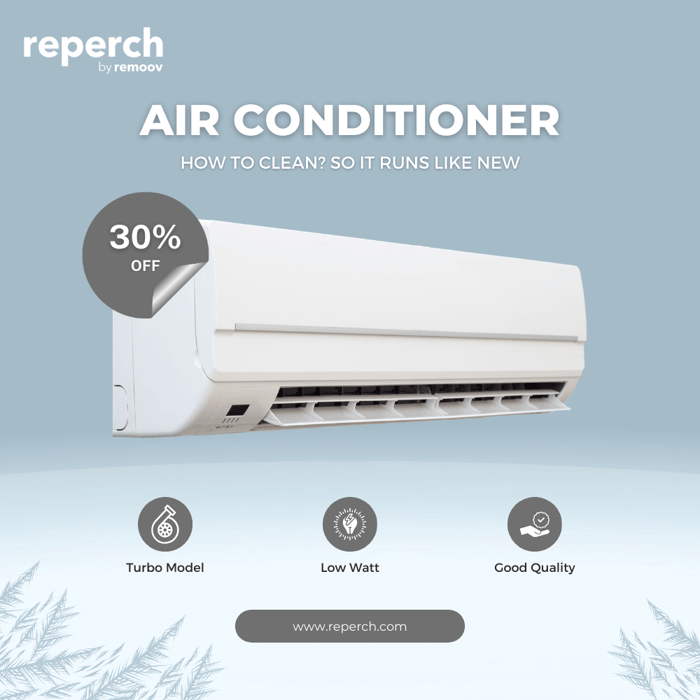Maintaining your air conditioner is essential to ensure that it runs efficiently during the summer months. A well-maintained unit can cool your home effectively, reduce energy costs, and extend the lifespan of the appliance. By following a simple cleaning routine, you can keep your air conditioner in top shape, ensuring it provides cool air when you need it most.
Why Cleaning Your AC is Important
Your air conditioner accumulates dust, dirt, and debris over time, which can hinder its performance. A dirty unit is forced to work harder, leading to higher energy bills, reduced cooling efficiency, and even potential breakdowns. Neglecting routine maintenance can also decrease the air quality in your home, as pollutants from a dirty AC unit can be recirculated into the living space. By cleaning your AC regularly, you improve airflow, enhance efficiency, and protect your investment in the long run.
Gather the Necessary Materials
Before you start cleaning your air conditioner, gather the following materials:
Warm water
Mild soap or detergent
Soft cloth or brush
Screwdriver
Vacuum cleaner
Compressed air
Hydrogen peroxide spray
These materials will help you clean different parts of your air conditioning unit effectively.
1. Turn Off the Power
Safety is always the first step. Turn off the power to your air conditioning system at the circuit breaker to avoid any electrical hazards. For outdoor units, be sure to also switch off the condenser’s power using the 240-volt disconnect box, typically located near the unit.
2. Clean or Replace the Filters
Filters are the first line of defense for your air conditioner. They trap dust, pollen, and other airborne particles. However, clogged filters reduce airflow and force your AC to work harder, increasing energy consumption. Remove the filters, vacuum away loose debris, and wash them with soapy water. Let them dry completely before reinstalling them. Depending on your system’s usage, you should replace filters every one to three months.
3. Inspect and Clean the Evaporator Coil
The evaporator coil is responsible for cooling the air that gets circulated throughout your home. Over time, dust and grime can accumulate on the coil, reducing its ability to absorb heat. To clean it, gently dust the coil using a soft brush. If necessary, use a commercial coil cleaner to remove stubborn debris. Once clean, ensure the drain pan below the coil is clear to prevent water buildup and potential leaks.
4. Clear the Condenser Coils
Your outdoor condenser coils are exposed to the elements, making them prone to collecting dirt, leaves, and other debris. This buildup can block airflow, reducing the efficiency of your AC unit. After removing any visible debris, use a garden hose to spray the coils gently, ensuring that the fins are not damaged. For bent fins, use a fin comb to straighten them out, allowing air to flow freely.
5. Check the Coolant Lines
The refrigerant lines that connect the indoor evaporator unit to the outdoor condenser are essential for cooling. These lines are typically insulated to prevent energy loss. Check for any damage to the insulation and replace it if necessary. Properly insulated lines ensure that your AC runs efficiently, keeping your home cool without wasting energy.
6. Clear the Drain Line
Your AC unit generates condensation as it cools your home. This moisture is typically drained away through a small pipe. Over time, the drain line can become clogged with dirt and algae, causing water to back up into the system. To prevent this, check the drain line regularly and use a wet-dry vacuum to remove any blockages. You can also flush the line with water or a mild bleach solution to prevent future clogs.
7. Test the Unit
Once all components have been cleaned and the unit has been reassembled, it’s time to test your air conditioner. Restore power to the unit and run it for a few minutes to ensure that everything is functioning correctly. You should notice an improvement in airflow and cooling efficiency if the cleaning was done properly.
8. Schedule a Professional Tune-Up
While regular cleaning can significantly improve the performance of your air conditioner, it’s still essential to schedule a professional tune-up annually. A trained HVAC technician can perform a more thorough inspection, check refrigerant levels, and address any potential issues before they become costly repairs.
Benefits of Regular Maintenance
- Improved Efficiency: A clean air conditioner doesn’t have to work as hard, meaning it uses less energy to cool your home.
Better Air Quality: Dust, allergens, and pollutants can circulate through your home if your AC isn’t clean, leading to health issues.
Extended Lifespan: Regular maintenance reduces the wear and tear on your AC unit, prolonging its life and delaying the need for a replacement.
Lower Energy Bills: When your AC runs efficiently, it consumes less energy, translating into lower utility bills.
Final Tips for Maintaining Your AC
In addition to cleaning your AC, you can take a few extra steps to keep it running smoothly:
Replace filters regularly: Clean or replace your filters every one to three months, depending on usage.
Clear debris around the outdoor unit: Ensure at least two feet of clearance around the outdoor condenser to allow for proper airflow.
Check for refrigerant leaks: If your system isn’t cooling properly, have a technician check for leaks in the refrigerant lines.
Listen for unusual noises: Strange sounds could indicate mechanical issues that require professional attention.
Maintain your air conditioner with these simple steps to enjoy a cooler home and lower energy bills all summer. Explore more tips at Reperch!








